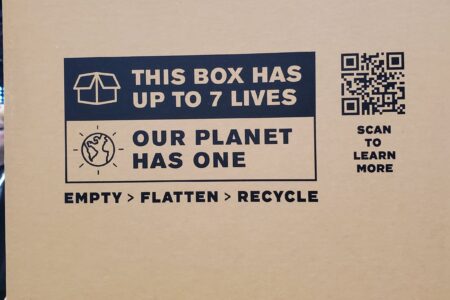Testing the “Microwaveability” of Supermarket Coffee Brands

I recently came across a 2017 survey that tested thirteen/supermarket grocery store coffee brands in the United States to “find the best of the bunch.”
The Best of the Grocery Store Coffee survey had no coffee criteria according professional cupping protocol like those used by the Specialty Coffee Association or Cup of Excellence, rather, it was based on the taste preferences of the editorial team and cost (a daily, morning cup from a coffee shop valued at USD $3 was deemed too steep).
A surprise criterion was the “microwaveability” of the coffee. This aspect was important to the author who felt that coffee should not be wasted by throwing it out because it had cooled. Instead, cold coffee could be microwaved and should therefore still taste good when reheated. The author stated the he owns an automatic drip coffee maker, two French presses, and a pour-over, so he’s familiar with the various methods.
The survey judged both canned and bagged grocery store coffee — all ground, no whole beans. Basic varieties – original, house blend or breakfast – were used, and were prepared via a ceramic pour over with unbleached paper filter and consumed black with no sugar. The coffees were tested at brew temperature, room temperature and after being microwaved to brew temperature. The coffees were assessed on four “more or less objective” metrics: flavour, price, thermal shift; whether/how flavour changes as the coffee cools; and microwaveability; whether/how the flavour is affected by reheating.
The overall best of the brands was Maxwell House, which, in terms of flavour and cost, ranked the highest but “lost points due to not being good when microwaved.” At USD $4.19 per 11.5-oz can, the flavour was deemed tasty enough and cost efficient. The runner up, was New England Coffee, which costs less than $10 per bag. If consumers wanted to “splurge,” Dunkin Donuts ranked the best at-home version of a chain store brand ($9.29 per 12-oz bag).
In cans, Maxwell House ($5.83/lb or $4.19 per 11.5-oz can) was the standout, having the “best flavour of the bunch” while still being affordable. The runner up was Café Bustelo (the least expensive option when purchasing the vacuum-packed at $5.58/lb or $6.38 per pound) but did not withstand being microwaved. Folgers Classic Roast House Blend ($6.20/lb or $3.99 per 10.3 oz tub), ranked third. (The author did admit that it felt “disingenuous to make pour over coffee from Folgers in a plastic tub” but the “results were quite drinkable.”)
In bagged coffee, New England Coffee came out on top (“reheats well” and costs less than $7.49 per 12-oz bag) followed by Green Mountain (Breakfast Blend, $9.99 for a 12-oz bag, an “impressively good coffee for the price”) and Eight O’Clock Coffee ($7.69 per 12-oz bag “but tastes more expensive”).
It was serendipitous finding this survey as during a recent National Coffee Association (NCA) Coffee Supply and Demand webinar (http://www.ncausa.org/Industry-Resources/Webinars/Coffee-Supply-Demand-2018), one of the presenters, James Watson, senior analyst, in Rabobank’s Food & Agribusiness Research & Advisory Group, noted that Folgers and Maxwell House rank among the top six most popular grocery store brands with YOY growth, followed by Café Bustelo, which “has had moderate growth by carving a niche between lower priced and higher priced grocery store brands.” He added that there is “probably room for brands priced above mainstream/lower price point and premium priced grocery store brands.”
The JM Smuckers Company aims to fill this gap with its new 1850 Coffee, which is a “premium style coffee at an affordable, accessible price point.” The brand name, 1850, honours the founding date of Folgers Coffee. Launched in April, 1850 Coffee targets younger consumers – millennials and Generation Z – but “has multi-generational appeal,” Geoff Tanner, senior vice president of consumer engagement and quality at Smuckers, told me during a recent 1850 media event. 1850 has an MSRP of $7.49 per 12-oz bag. (See: https://www.teaandcoffee.net/19614/news/lead-news/folgers-new-premium-1850-coffee-brand-targets-millennials/.)
Watson stressed that any company looking to enter the market with a new brand must have enough equity to support the new brand and that a new brand must be relevant. Smuckers is supporting 1850 Coffee with a multi-platform campaign including television, print, and a heavy digital/social media contingent to reach the target demographic “where they live.” 1850’s digital campaign includes a “Bold Pioneer” entrepreneur contest in partnership with Reddit co-founder Alexis Ohanian. (See: https://www.teaandcoffee.net/20036/news/1850-coffee-alexis-ohanian-partner-for-new-bold-pioneer-contest/.)
It’s not the survey or the results that are significant — it’s the packaging format and retail channel that are. While there is much focus on specialty coffee and coffee house sales/growth, it’s important to remember that that the US market for packaged and ready-to-drink coffee sold at retail is a more than $13.5 billion industry. By 2020, market research firm, Packaged Facts, expects sales of packaged and ready-to-drink coffee in the US to close in on $18 billion. Ground coffee is still the largest contributing segment to the category, although single-cup has been quickly closing the gap. And while some consumers, who came of age being exposed to specialty coffee, may consider items like “canned coffee” outdated or unpalatable, many older and more traditional consumers are still purchasing ground coffee in cans. And those retailers that tried to shift their assortment to address the new coffee consumer by making major cuts in canned coffee found that they had alienated an important shopper segment.
The key takeaway is that whether it’s opening price point or premium, canned or bagged, the overall supermarket/grocery story coffee category is on a solid growth trend – with some segments experiencing strong growth – so those consumers should not be overlooked or ignored.



